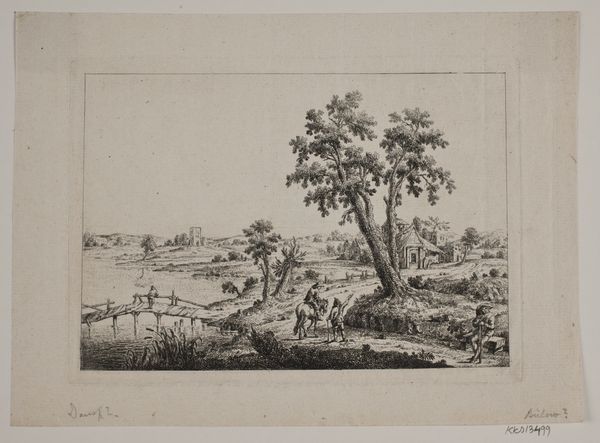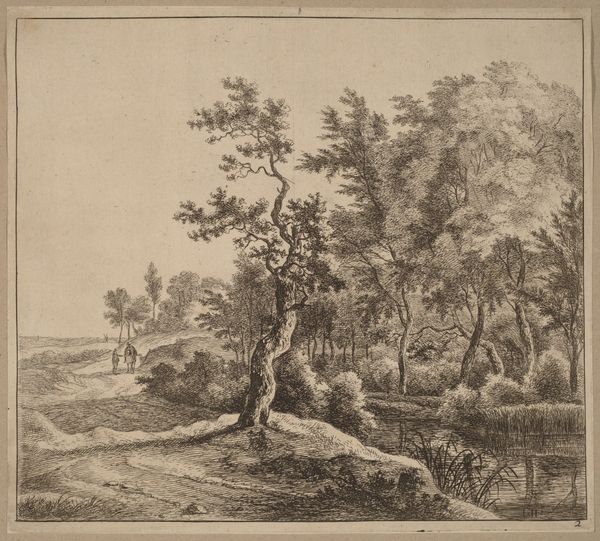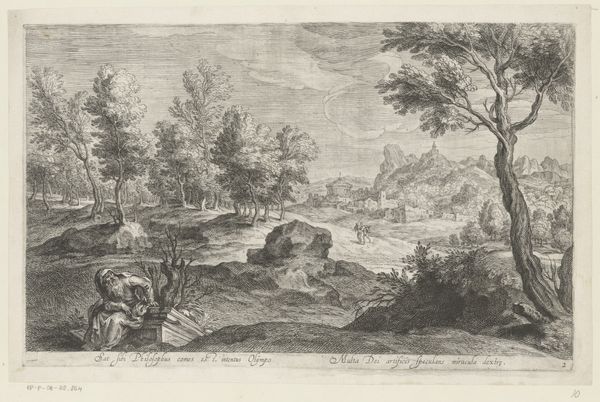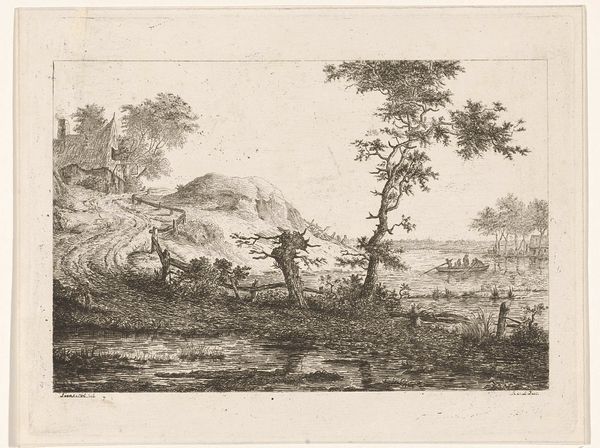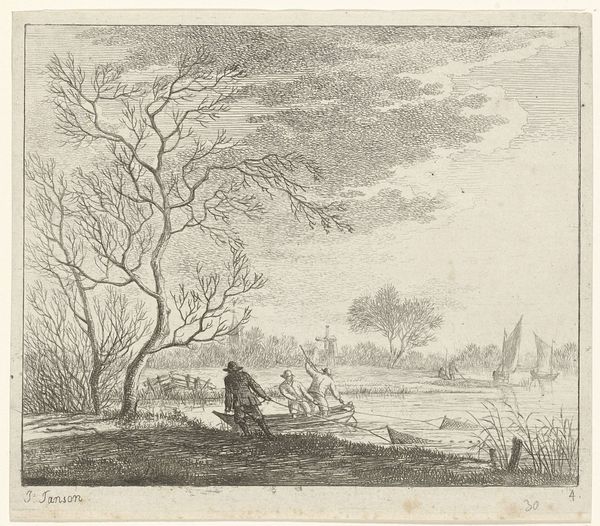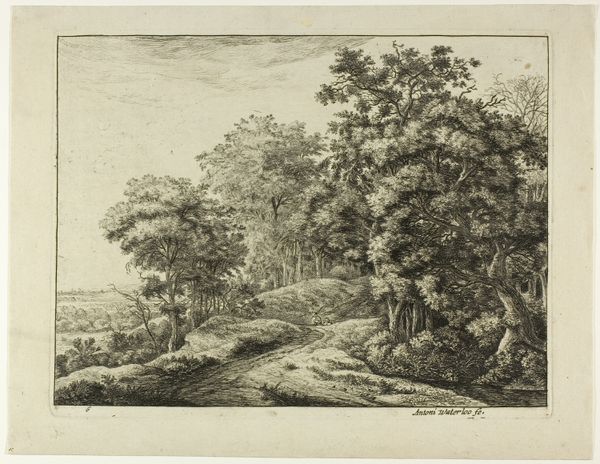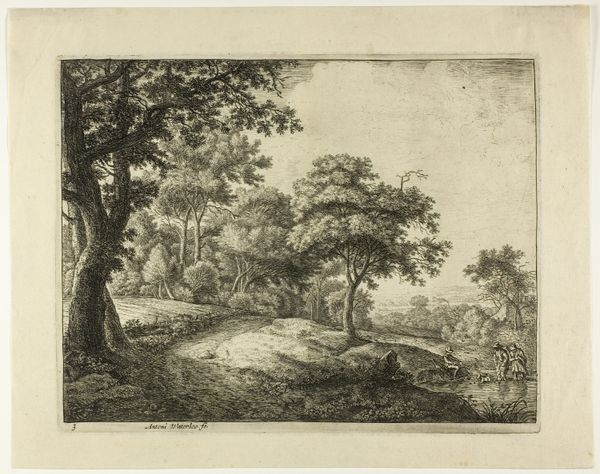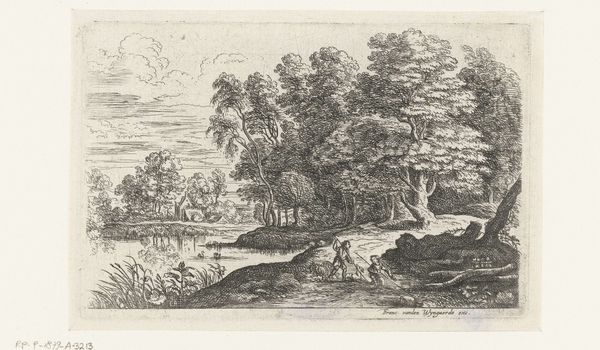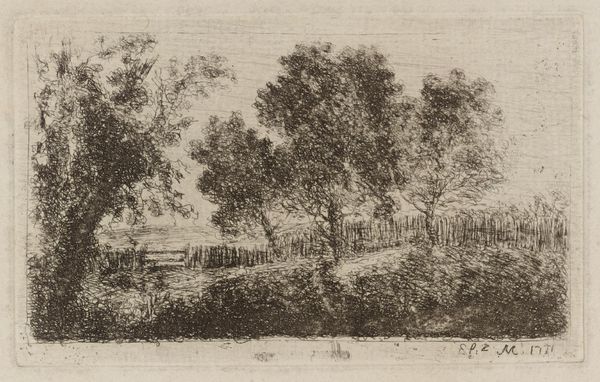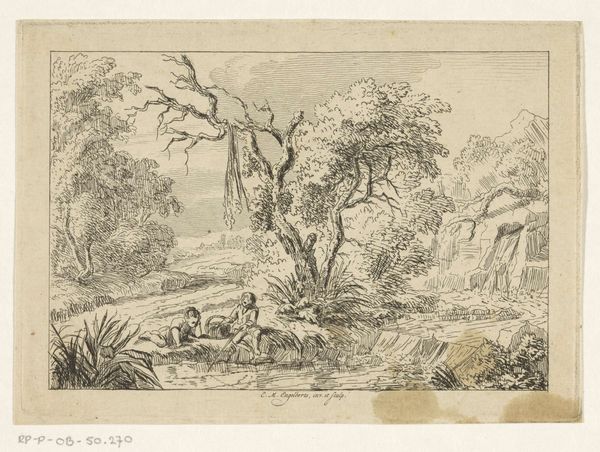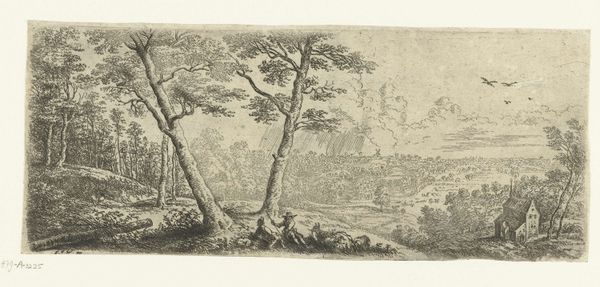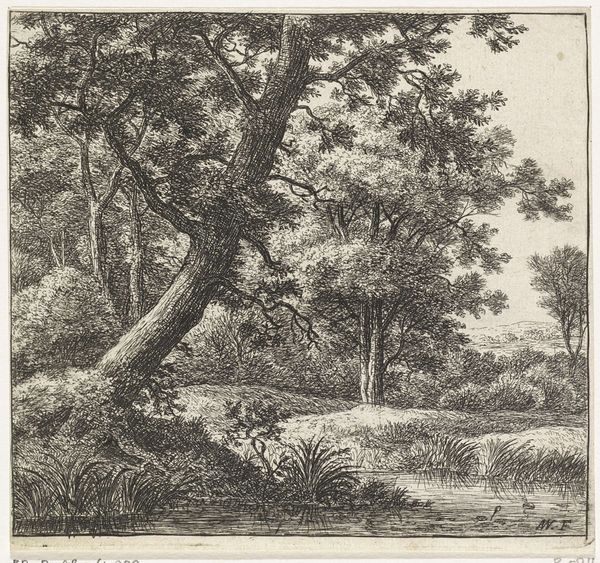
drawing, print, etching
#
drawing
#
ink painting
# print
#
etching
#
landscape
#
form
#
romanticism
#
line
Dimensions: 180 mm (height) x 222 mm (width) (bladmaal)
Curator: Let’s turn our attention to “Landskab med brosætning,” or “Landscape with Bridging” attributed to J.P. Møller, dating between 1783 and 1854. This etching captures a rural scene, a bridge nestled within nature. What strikes you about it? Editor: The delicacy of line is quite arresting; it’s like a whisper of a landscape, almost hesitant. The composition seems straightforward, but that dominant tree on the left creates an immediate tension. The foliage feels weighty, almost oppressive, compared to the lightness elsewhere. Curator: That density is crucial. Etchings like these circulated widely, shaping urban perceptions of the countryside. Romanticism was in full bloom; nature offered both solace and sublime terror, a reflection of broader societal anxieties and burgeoning industrial change. The focus was not only aesthetic but ideological, a pushback, maybe a promotion of a certain identity connected to land ownership. Editor: Precisely. Look how the bridge, supposedly connecting, almost disappears behind the foliage. The path forward is unclear. The seemingly benign landscape veils a more complex commentary on connection and disconnect. Is the "landscape" an actual space for interaction, or a removed idyllic object created by one class for another? The detail on the weeds and the overall unkempt nature almost screams of a space outside the cultivated order, a world existing despite it all. Curator: And consider the mechanics of printmaking itself. Etchings enabled the mass distribution of images. They democratized access, yes, but they also standardized representations, reinforcing specific interpretations. What Møller chose to emphasize and elide is telling about his vision, and about the demands of his market. These were meant to be seen, consumed, and above all, discussed and emulated, particularly among those with the time to be in this wild. Editor: So, while the scene evokes a sense of pastoral calm, it’s vital to remember its social context. It’s not simply about appreciating beauty but interrogating the forces that shaped its production and reception. Perhaps Møller sought not only to depict, but also to subtly critique the systems he participated in? Curator: Or solidify. Ambiguity is always part of the picture, isn't it? Looking closely encourages questions far beyond just subject. Editor: Absolutely. A reminder that landscapes are never neutral territories; they are charged with layers of meaning, power, and perspective. Curator: Exactly. The art exists on many levels that continue today.
Comments
No comments
Be the first to comment and join the conversation on the ultimate creative platform.
